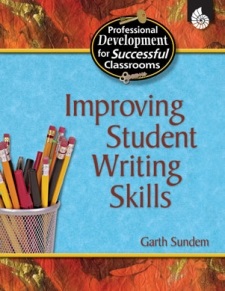Description
100+ Fun Ideas for Science Investigations
In the Primary Classroom
Description
100+ Fun Ideas for Science Investigation contains exciting, fun classroom experiments to help teach scientific investigation in the primary classroom.
The activities require a minimum of preparation and only the simplest of science equipment. Each activity provides opportunities for children to develop their skills of scientific enquiry.
The easy-to-use layout closely matches the statutory and non-statutory guidelines and schemes of work for Key Stages 1 and 2, and will make this an invaluable book for all primary teachers.
LIFE PROCESSES AND LIVING THINGS
HUMANS AND OTHER ANIMALS
Ourselves (Ages 5–7) 11–15
1. Can you recognize objects from touch?
2. Can you recognize things from smell?
3. Is the tallest person the oldest?
4. Are everybody’s hands the same?
5. Does the tallest person have the biggest feet?
Health and growth (Ages 5–7) 16–22
6. Do we get warmer or cooler when we exercise?
7. Does exercise affect the rate at which we breathe?
8. Does our pulse rate get faster or slower when we exercise?
9. Does colour influence which food we like to eat?
Teeth and eating (Ages 7–9) 23–25
10. Do all rabbits eat the same food?
11. Do cats and dogs eat the same food?
12. Which foods are particularly damaging to teeth?
Moving and growing (Ages 7–9) 26–29
13. Who have the longest arms – boys or girls?
14. Are adults’ heads bigger than children’s heads?
15. Do muscles work harder during exercise or when you are sitting still?
Keeping healthy (Ages 9–11) 30–32
16. Are everybody’s pulse rates the same?
17. What sort of exercise affects pulse rate the most?
18. Does your pulse rate stay higher for longer if you exercise longer?
LIVING THINGS IN THEIR ENVIRONMENTS
Growing plants (Ages 5–7) 33–36
19. Do plants need soil to grow?
20. Do plants need water to grow?
21. Do plants need light to grow?
22. Does the size of the pot influence the size of the plant?
Plants and animals in the local environment (Ages 5–7) 37–38
23. Where do living things live?
24. Which animals and plants live in different local habitats?
Variation (Ages 5–7) 39–44
25. Are all animals the same?
26. Are all humans the same?
27. Are all plants the same?
28. Do people with the biggest feet have the biggest hand span?
29. Do people with the longest legs jump the farthest?
30. Do people with the longest arms throw the farthest?
Helping plants grow well (Ages 7–9) 45–48
31. Do plants need leaves to grow?
32. How do plants feed?
33. Do plants grow better the more they are watered?
34. Does gravity affect the way plants grow?
Habitats (Ages 7–9) 49–52
35. How do we know woodlice prefer damp conditions?
36. How do we know mealworms prefer the dark?
37. Do earthworms live above or below the ground?
38. What do snails like to eat?
Life cycles (Ages 9–11) 53–56
39. How many ways can seeds be dispersed?
40. Which seeds have the most effective parachutes?
41. What do seeds need to germinate?
Enquiry in environmental and technological contexts
(Ages 9–11) 57–61
42. Does location affect a dandelion’s growth?
43. Do you find more small insects on the top or underside of leaves?
44. Is there any difference in the length and width of leaves on the top, middle or bottom of a shrub?
45. Will we find different animals at different depths of a pond?
Interdependence and adaption
(Ages 9–11) 62–63
46. How do fertilizers affect plant growth?
47. What happens to plants grown in the dark then placed on a window sill?
Micro-organisms (Ages 9–11) 64–66
48. How can you prevent food becoming mouldy?
49. What does yeast need to stay alive?
MATERIALS AND THEIR PROPERTIES
GROUPING AND CLASSIFYING
Sorting and using materials
(Ages 5–7) 67–71
50. Which material would be best to make a toy slide?
51. What materials stick to a magnet?
52. Which paper is best for wrapping a present?
53. Which material would be best to make an umbrella?
54. Which type of ball is the bounciest?
Grouping and changing materials
(Ages 5–7) 72–76
55. What happens to shape and volume when liquid is poured from one container to another?
56. How can we make ice melt more quickly?
57. What happens to liquids when they are cooled?
58. How can we make chocolate softer?
59. What happens when water is boiled?
Characteristics of materials
(Ages 7–9) 77–82
60. What material makes the best floors for different rooms in a house?
61. Which type of paper is best for mopping up spills?
62. Which supermarket has the strongest carrier bags?
63. How far can an elastic band stretch before it breaks?
64. What material would make the best swimming costume?
Rocks and soils (Ages 7–9) 83–86
65. Which type of rock are the hardest?
66. Which rocks are permeable?
67. Can you change the speed that water runs through soil?
CHANGING MATERIALS
Keeping things warm or cool
(Ages 7–9) 87–89
68. How can we stop an ice cube from melting?
69. How can you keep a drink cool?
70. Which materials keep a container of water warm the longest?
SEPARATING MIXTURES AND
MATERIALS
Solids, liquids and how they can be separated (Ages 7–9) 90–97
71. How can you separate sand from water?
72. How can you separate solids of different sizes?
73. What happens to salt when you mix it with water?
74. Is there a limit to how much salt will dissolve in water?
75. Can salt be separated from water?
76. Can sugar be separated from water?
77. Can you mix oil and water?
CHANGING MATERIALS
Gases around us
(Ages 9–11) 98–100
78. What happens to air when it heats up and cools down?
79. What happens to puddles of water when the rain stops?
80. How can you compare the different amounts of air in different soils?
Changing state (Ages 9–11) 101–104
81. Will an ice cube fl oat in salt water?
82. What makes a difference to how quickly washing dries?
83. Which materials are soluble?
More about dissolving
(Ages 9–11) 105–108
84. Do sugar and salt dissolve equally in water?
85. How can you make a solid dissolve faster?
86. Will steam condensed from boiling blue ink be blue?
Enquiry in environmental and technological contexts
(Ages 9–11) 109–111
87. What is an effective way to clean dirty water?
88. How much salt does it take to make an object float?
89. What material makes the best boat?
Reversible and irreversible changes
(Ages 9–11) 112–114
90. What happens when you heat eggs?
91. What happens when you burn wax?
PHYSICAL PROCESSES
LIGHT AND ITS PROPERTIES
Light and dark (Ages 5–7) 115–117
92. Can you see objects in the dark?
93. How can you be seen in the dark?
Light and shadows
(Ages 7–9) 118–121
94. How are shadows formed?
95. Do shadows change in length and position?
96. Do shadows move in regular patterns each day?
97. What materials throw the best shadows?
How we see things
(Ages 9–11) 122–124
98. Do shiny surfaces reflect light better than dull surfaces?
99. How can you make light bend?
100. How can you make your shadow bigger?
FORCES AND MOTION
Pushes and pulls
(Ages 5–7) 125–127
101. Which parts of your body move?
102. How many things in the classroom can you push or pull?
103. How can you stop a moving object?
Forces and movement
(Ages 5–7) 128–130
104. How can you make a soft ball change direction?
105. Do bigger toy cars travel farther than smaller toy cars?
106. What elements affect the distance a toy car travels after leaving a ramp?
Magnets and springs
(Ages 7–9) 131–136
107. What happens when magnets are put together?
108. What materials are magnetic?
109. Which magnet is the strongest?
110. Do magnets work through materials?
111. How far can you catapult a toy car?
Friction (Ages 7–9) 137–143
112. On which surfaces do objects slide more easily?
113. Which shoe has the best grip?
114. Which shapes move easily through water?
115. Does the size of a parachute affect how long it takes to fall?
116. Does the shape of a kite affect how it flies?
117. What shape of paper plane flies the farthest?
The Earth, Sun and Moon
(Ages 9–11) 144–148
118. How do we know that the Earth isn’t flat?
119. Which is bigger: the Sun or the Moon?
120. Does the Sun move?
121. How long does it take the Moon to orbit the Earth?
Forces in action (Ages 9–11) 149–154
122. Does the shape of paper affect the speed it falls?
123. Will a pendulum change direction as it swings?
124. What affects the time a spinner takes to fall?
125. How can you make a lump of Plasticine float?
126. How can you make cotton wool fall as slowly as possible?
SOUND AND ITS PROPERTIES
Sound and hearing
(Ages 5–7) 155–156
127. From how far away can you hear someone talking?
128. How can you make sound quieter?
Changing sounds
Ages 9–11) 157–162
129. How can you change the pitch and loudness of a drum?
130. How can we record vibrations?
131. How can you change the pitch and loudness of a stringed instrument?
132. How can you change the pitch and loudness of a wind instrument?
ELECTRICITY
Using electricity
(Ages 5–7) 163–166
133. How do you make a buzzer buzz?
134. Can you light up the bulb?
135. How can you make a doorbell?
136. Can you make a toy lighthouse?
Circuits and conductors
(Ages 7–9) 167–168
137. How can you make a bulb brighter?
138. What materials conduct electricity?
Changing circuits
(Ages 9–11) 169
139. Does the thickness of a wire affect the brightness of a bulb?
Enquiry in environmental and technological contexts
(Ages 9–11) 170–172
140. How do you make an electrical switch?
141. How could you make a warning device?







Reviews
There are no reviews yet.